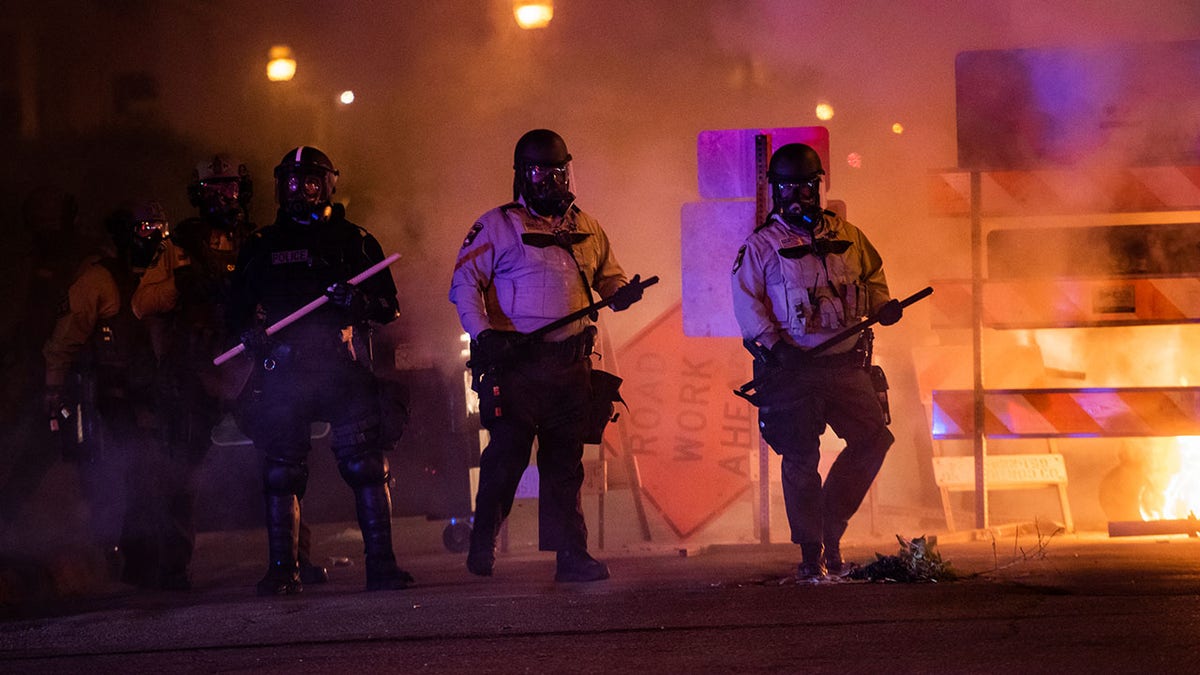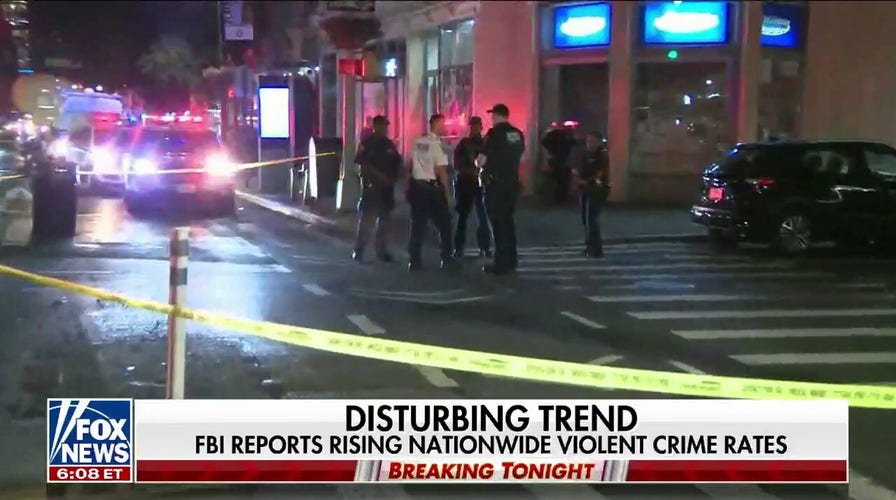FBI reports suggest violent crime is still on the rise across US
Fox News correspondent David Spunt breaks down FBI reports which detail the latest nationwide crime statistics on 'Special Report.'
The FBI released its national crime data for 2021 this week, but it lacks data from nearly 40% of police departments nationwide, including massive forces in cities such as New York and Los Angeles.
"I don't think you could get national numbers, at least not useful national numbers, from this data," Jacob Kaplan, criminologist at Princeton University, told the Marshall Project earlier this year. "It's going to be really hard for policymakers to look at what crime looks like in their own community and compare it to similar communities."
The FBI switched to a new recording program at the start of January 2021, called the National Incident-Based Reporting System. The new reporting method was rolled out to provide a more thorough snapshot of offenses, such as what weapons were used in an incident, types of property stolen, and more detailed demographic information on victims and perpetrators of crimes.
But nearly 40% of police departments nationwide did not provide full data sets on 2021 crime to the FBI by the March deadline of this year.
US MURDER RATE CONTINUED GRIM CLIMB IN 2021, NEW FBI ESTIMATES SHOW

FBI agents approaching a crime scene (Getty Images)
Most departments in Florida, California, New York, Illinois, Pennsylvania failed to report data, according to the Marshall Project, which has been tracking the data for months. The two most populated cities in the country, New York and Los Angeles, also failed to deliver full reports to the FBI last year.
Only 52% of law enforcement departments nationwide sent full, 12-month reports of crime data to the FBI for last year. Roughly 9,700 law enforcement agencies did not provide full data sets, Reuters reported.
"We're certainly not saying it's a wash," a senior official from the Bureau of Justice Statistics told reporters Tuesday, according to CBS News. "We have all the confidence in the world about these estimations. It's not that we don't have confidence in what they're producing. There's just a certain level of uncertainty around the estimates."
PHILADELPHIA POLICE UNDERREPORTED CRIME DATA TO FBI FOR CITY'S BLOODIEST YEAR ON RECORD
The data for 2021 shows there was an estimated 4.3% increase to murders compared to 2020’s wildly bloody year, at about 22,900 murders last year to 2020’s 22,000.
Murders spiked by nearly 30% in 2020, as the pandemic upended society in unprecedented ways and protests and riots demanding the police be defunded erupted during the summer that year. The data marked the largest single-year increase in killings since the agency began tracking the crimes.

MINNEAPOLIS, MN - MAY 30: Riot police advances toward protesters at the intersection of E 31st St and S 3rd Ave on Saturday, May 30, 2020, in Minneapolis, MN. Protests in the wake of the death of George Floyd while in police custody has erupted across the country. (Photo by Salwan Georges/The Washington Post via Getty Images) (Photo by Salwan Georges/The Washington Post via Getty Images)
The FBI data for 2021 show violent crime overall fell by 1% in 2021 compared to 2020, at 1,326,600 reports in 2020 to 1,313,200 last year. And robberies fell by a notable 8.9% in 2021 compared to the year prior.
When compared to 2019, overall violent crimes increased by roughly 9% in 2021. Murders rose by roughly 39% when comparing the estimated 16,425 murders in 2019 to the estimated 22,900 last year.
"While a large number of agencies were successful in making the transition to NIBRS, many others, including agencies with populations greater than 100,000, faced challenges and were unable to modify their systems to begin submitting NIBRS data in time to meet the required cut-off date of March 14, 2022, for inclusion in the annual release of crime data for 2021. These are agencies that would normally have been included in the national view, but now will not be represented with 2021 data," the FBI later told Fox News Digital when approached for comment on the incomplete data.
The data’s incomplete status has some experts concerned.
FBI UNDERCOUNTS NUMBER OF TIMES ARMED CITIZENS HAVE THWARTED ACTIVE SHOOTING INCIDENTS: REPORT
"The overwhelming lack of law enforcement participation presents a challenge when assessing the true state of nationwide crime in America," said Jillian Snider, the policy director for the R Street Institute’s criminal justice and civil liberties team, told the New York Post. She added that people should "proceed with caution" when using the data for policy purposes.

The FBI seal is displayed on a podium before a news conference at the agency's headquarters on June 14, 2018, in Washington. (AP Photo/Jose Luis Magana, File) (AP Photo/Jose Luis Magana, File)
The Department of Justice said on Wednesday that the data included estimates based on partial-year data from law enforcement departments, and federal officials were able to produce state-level estimates for 40 states.
"While the FBI did utilize methods for estimation to try to combat gaps in the data, it is fundamentally challenging to do so when such a large swath of data is not present," Rachael Eisenberg, the senior director of liberal think tank the Criminal Justice Reform at the Center for American Progress, told CBS News.
The FBI told Fox News that as of Septemeber of this year, "12,381 of the nation’s 18,806 law enforcement agencies have been able to successfully transition to NIBRS."
CLICK HERE TO GET THE FOX NEWS APP
The figure "outpaces 2021 when only 9,470 agencies transitioned to NIBRS data for the year. As more agencies continue to transition to NIBRS, subsequent years will provide a much broader and in-depth national view of crime based upon statistics. This will allow for comprehensive annual data and trend releases. "
"With continued support from the FBI’s Uniform Crime Reporting (UCR) Program and as more agencies continue to transition to NIBRS, subsequent years will provide a much broader and in-depth national view of crime based upon statistics," the statement added.


